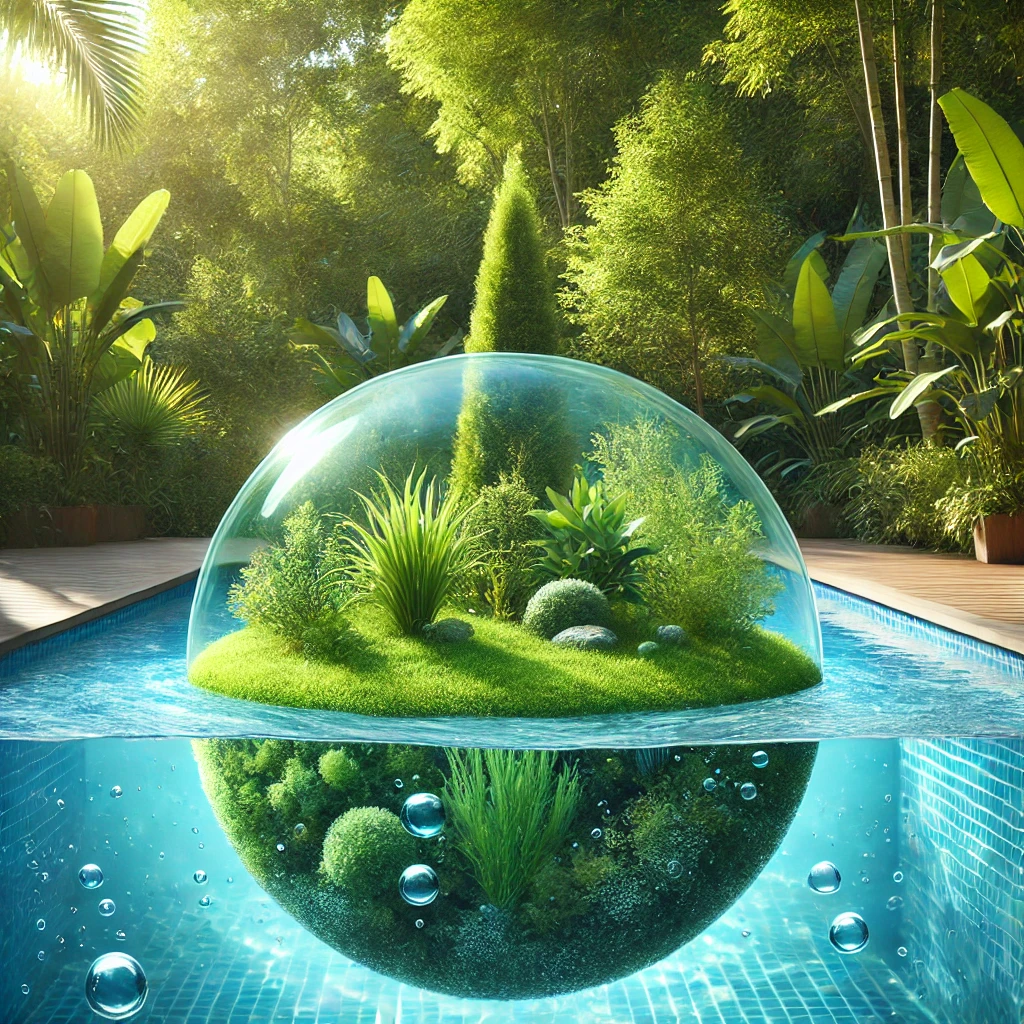Maintaining a clean swimming pool is essential for safety and enjoyment. Adding algaecide to pool plays a critical role in this maintenance. Both natural and chemical algaecides are commonly used. However, the sustainability of these options is increasingly important. This article explores which type of algaecide is more sustainable for swimming pools.

I. Understanding Natural Algaecides
1. Sources of Natural Algaecides
Natural algaecides are derived from organic sources. They often contain ingredients like barley straw, essential oils, and natural minerals.
2. How Natural Algaecides Work
These substances work by creating an environment that is hostile to algae growth. For example, barley straw slowly decomposes, releasing compounds that inhibit algae.
3. Benefits of Natural Algaecides
Natural algaecides are biodegradable. They break down naturally, leaving no harmful residues. Consequently, they pose minimal risks to pool water quality and the environment.
II. Understanding Chemical Algaecides
1. Composition of Chemical Algaecides
Chemical algaecides are synthetic products. They include active ingredients like copper sulfate, quaternary ammonium compounds, and sodium carbonate.
2. Mechanism of Action
These chemicals directly kill algae by disrupting their cellular processes. Chemical algaecides are highly effective and act quickly.
3. Environmental Concerns
However, they can have unintended environmental consequences. For example, residual chemicals may harm non-target organisms in the pool. Moreover, overuse can lead to resistant algae strains.
III. Environmental Impact of Natural Algaecides
1. Biodegradability
Natural algaecides generally have a lower environmental impact. They are biodegradable, meaning they do not accumulate in the environment.
2. Ecosystem Support
This makes them a more sustainable option for swimming pools. Furthermore, natural algaecides support the overall health of pool ecosystems.
3. Balanced Ecosystem
They allow beneficial microorganisms to thrive while controlling algae. As a result, water quality is maintained without disrupting the pool’s ecological balance. However, natural algaecides may act more slowly than chemical alternatives.
IV. Environmental Impact of Chemical Algaecides
1. Toxicity Risks
Chemical algaecides can have significant environmental consequences. They are effective at killing algae, but they also may harm other aquatic life in the pool.
2. Chemical Accumulation
Additionally, chemicals like copper can accumulate in the water. This buildup can lead to long-term toxicity.
3. Ecosystem Disruption
Over time, the repeated use of chemical algaecides can disrupt the pool’s ecosystem. This disruption may result in a less balanced environment. Furthermore, chemical residues may pose risks if the pool water is not properly treated and managed.
V. Effectiveness of Natural Algaecides in Pools
1. Time to Effectiveness
Natural algaecides are effective but require patience. They often take longer to show results compared to chemical algaecides.
2. Resistance Concerns
However, they are less likely to cause resistance in algae populations. Over time, natural algaecides can provide more sustainable control.
3. Long-Term Benefits
They create an environment less conducive to algae growth. Thus, natural algaecides help maintain a healthier and more balanced pool ecosystem.
VI. Effectiveness of Chemical Algaecides in Pools
1. Speed of Action
Chemical algaecides are highly effective for rapid algae control. They work quickly, often clearing algae blooms within days.
2. Resistance Development
However, their effectiveness may diminish over time due to resistance development. Additionally, chemical algaecides may require frequent reapplication.
3. Environmental Risks
This repeated use can increase environmental risks and disrupt the pool’s natural balance. While they offer a quick solution, chemical algaecides may not be the most sustainable choice in the long run.
VII. Cost Considerations for Pool Maintenance
1. Initial Costs
The cost of maintaining a swimming pool is another important factor. Natural algaecides may have a higher initial cost.
2. Long-Term Savings
However, their long-term benefits can justify this expense. Since they are more sustainable, natural algaecides may reduce the need for frequent treatments.
3. Hidden Costs
In contrast, chemical algaecides may be cheaper initially. Yet, the need for regular reapplication can increase costs over time. Additionally, potential environmental cleanup costs from chemical use should be considered.
VIII. Long-Term Sustainability in Pool Management
1. Sustainable Ecosystems
In terms of long-term sustainability, natural algaecides have the advantage. They support the health of the pool’s ecosystem and pose fewer risks.
2. Resilience Building
Over time, using natural algaecides can lead to a more balanced and resilient pool environment. This resilience is crucial for sustainable pool management.
3. Limitations of Chemicals
On the other hand, chemical algaecides may offer immediate results but can be unsustainable long-term. The potential for environmental damage and resistance makes them a less viable solution.
IX. Public Health and Safety in Swimming Pools
1. Health Risks of Chemicals
Public health is another crucial consideration. Natural algaecides are generally safer for swimmers.
2. Safer Alternatives
They do not contain harmful chemicals and are less likely to irritate skin or eyes. This makes them a safer choice for family pools and public swimming areas.
3. Chemical Concerns
Chemical algaecides, however, can pose health risks. Chemical residues in the water can cause skin irritation, eye redness, and respiratory issues. Therefore, natural algaecides offer a safer, more sustainable option for maintaining pool hygiene.

X. Conclusion: Making the Sustainable Choice
In conclusion, the choice between natural and chemical algaecides depends on sustainability goals. Natural algaecides are more environmentally friendly and safer for public health. Although they may act more slowly, their long-term benefits make them a better choice and it is best pool algaecide.
Chemical algaecides, while effective, can lead to environmental harm and health issues. For those seeking a sustainable solution for swimming pool maintenance, natural algaecides are the superior option. Therefore, prioritizing sustainability in algae control is essential for protecting both our pools and the environment.
 Instant
Quote
Instant
Quote Email
Us
Email
Us